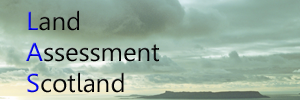Eigg
Principal Sources
RMS I (412, 520, 551), App 1 No 9
RMS II (2438, 2439) 1498
RMS III (1131) 1531-2, (1396) 1534
RMS VII (264, 344) 1610. The latter of these refers to 30m New Extent which I think is a mistake.
RMS IX (7) 1635, (625) 1636
RMS XI (1105) 1667
RSS II (2498) 1538, (3263) 1539-40, (3906) 1540-1
APS I pp 3, 91
APS VII p 403 1662
AS II (464) 1633
Inverness Retours (47) 1627, (118) 1695
GD128/49/3/1 Rental 1798
GD128/66/1 Re Sale of part of Eigg 1774
GD200/4/1 1720, GD200/4/17 1763
GD201/1/3 <1585
GD201/1/17 1627
GD201/1/263 & 265 1763
GD201/1/305 1794
GD201/1/362/1
GD201/2/15 1756
GD201/2/27A & 29 1761
GD201/2/32 & 33 1763
GD201/2/37A & 38 1765
GD201/3/1 1630
GD201/3/2 1630
GD201/5/11/1 1723
GD201/5/112 1763
GD201/5/1163 1765
GD201/5/1257/3 Rental 1718
GD443/13/1 1760, GD443/13/2 1761, GD443/13/4 1764, GD443/13/5 1766
RS37/6/380r 1641
RS38/3/294v 1668
E744/1/1 & 2 D Bruce rental 1748
C Fraser-Mackintosh, Excerpta e Sasinarum Registris Vice-comitatum de Inverness, Vol II, No’s 173 & 178, Inverness, 1872.
Macfarlane’s Geographical Collections II pp 175-6, 528
J Munby, Lost Ancestors – Island families in 1765 on Eigg, Muck, Rum & Canna, Oxford, 2007.
WF Skene, Celtic Scotland III, p 433
D Rixson, The Small Isles, Edinburgh, 2001
Map of Eigg by W Bald – copy held by RCAHMS
Map of Eigg by Thomas Leslie, 1824 – NLS (EMS.s.588)
RMS I App 1 No 9 of c. 1309 is a charter by Robert I to Roderick Macruari which includes the
sex davatas terre de Egis et de Rum cum advocatione ecclesie ejusdem
(6 davachs of Eigg and Rum with right of presentation to the church)
We have two documents from 1498 which map out the pennylands of Eigg in great detail. In RMS II (2438) and (2439) James IV divided the island in two. Three-and-a-half out of the five ouncelands went to Ranald Makallan, the remaining one-and-a-half to Angus Rewochsoun Makranald. I have analysed these documents in The Small Isles pp 71-77. (There is also a set of slides concerning Eigg’s land-assessment which can be accessed throught the ‘mini-tutorial’ link in the last sentence of the front page of this blog). Eigg totalled 5 ouncelands or 100d. Alternatively it was worth 30m Scots under an exchange rate of 1 ounceland to 6 merks which was common to the Small Isles, the Uists and Barra. This is the only one of the Small Isles for which Skene’s late sixteenth-century source gives the correct total.
Eigg is quite remarkable in that we can use the early nineteenth-century maps of the island, (which show the farm boundaries), to plot the likely pattern of ouncelands in Norse times. Since these are actually called davachs rather than ouncelands we can push their dates back to pre-Norse times. Furthermore, as one of these davachs, Kildonnan, may date back to St Donnan’s early monastic settlement of c. 600 AD we can suggest a continuity of farm boundaries (and therefore land valuations) of at least 1400 years.

Leave a Reply